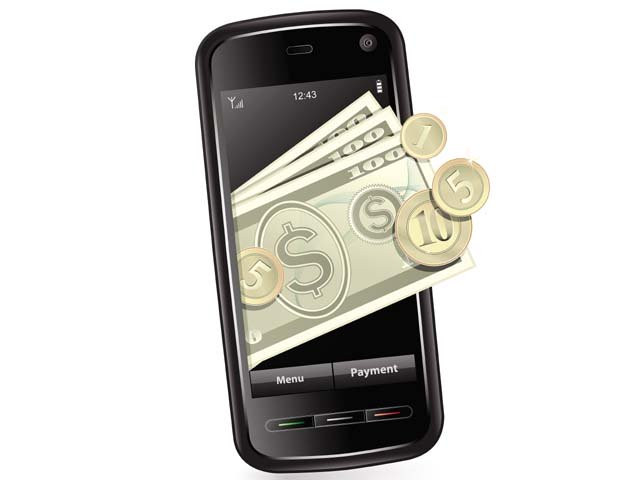Mobile banking sees a surge of new entrants
Impressive growth likely to continue but regulation has to keep up.
With Easypaisa, mobile banking established its footprint in the country in 2009 - however, most growth has taken place in the last three months.
KARACHI:
With the mobile banking segment heading towards growth and increasing competition, those cellular operators which have yet to launch mobile financial services are also rushing to jump onto the bandwagon.
During the quarter ending September 2012, the branchless banking segment saw more than 31.4 million transactions and Rs139 billion was managed through branchless banking channels, according to the State Bank of Pakistan.
In an analysis of this fast growing segment, the SBP reports that branchless banking players registered a growth of 25% in mobile wallets; 7% in number of agents; 11% in number of transactions and 21% in value transacted during the July-September 2012 quarter.
It is relevant to mention here that the growth rate for both transactions and money transacted during the third quarter of 2012 has declined when compared to the second quarter of 2012, according to the SBP. The entry of new players, however, will result in more growth, which should be reflected in the next quarter, the SBP said.
Telenor was the first operator to extend its financial arm in this fast-growing market segment. Telenor Pakistan, through its subsidiary Tameer Microfinance Bank, launched Telenor Easypaisa in October 2009. With Easypaisa, mobile banking established its footprint in the country in 2009. However, it is only in the last three months or so that more operators have formally launched their own mobile banking services.
Mobilink’ Mobicash and Zong’s Timepey were launched in November last year. Warid and Bank Alfalah recently announced a joint undertaking to introduce branchless banking on January 28, 2013, while the SBP issued a nationwide microfinance banking licence to U Microfinance Bank – owned by the Pakistan Telecommunication Company, Ufone’s sister concern – on February 1, 2013.
The SBP report says the success of branchless banking will depend on how the industry is able to overcome issues such as accounts activity level, agent quality and network, mass adoption of customers, their confidence on deposit-led solutions and the reliability of systems and technology.
“Given that only 22% of the country’s population has a conventional bank account – which also includes multiple accounts held by one person – a big chunk of the population remains unbanked,” explains Muhmmad Raza, a telecom analyst at Elixir Securities. “Even if transaction amounts are small, the market size is huge,” Raza continues.
“The rural mindset is such that people don’t trust depositing their money with a third party. This is helping growth,” he added. “Branchless banking is a regional phenomena, it is growing in Bangladesh and India as well,” Raza said, while commenting on the future of this segment.
Raza believes that despite the impressive growth statistics, the segment is still in its infancy. “The peak will be reached when you are able to avail a variety of services [with mobile banking] that a conventional bank offers,” he said. “But this will happen in time.”
“People have started building trust, but they will need proper regulations from the SBP to regulate the segment because it involves people’s money,” he said. “When the amount of transactions grows, the risk factor increases as well.”
Published in The Express Tribune, February 3rd, 2013.
Like Business on Facebook to stay informed and join in the conversation.

COMMENTS (2)
Comments are moderated and generally will be posted if they are on-topic and not abusive.
For more information, please see our Comments FAQ